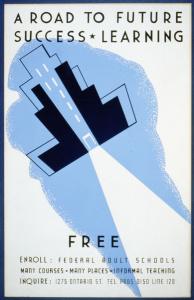A session from an education conference I listened in on last week reminded me of the parallels between teaching and editing.
That might seem strange, but bear with me.
I used to commute on Amtrak between Philadelphia and New York City, where I worked at The New York Times. One afternoon, I sat next to a chatty woman who wanted to know all about my job as an editor. As the train sped through central New Jersey, I explained how editors scrutinize the work of others, raising questions, fixing errors, working out the kinks in articles, pushing reporters to provide better context and better phrasing, writing headlines, and completing innumerable other tasks that lead to the publication of a newspaper.

As the train pulled into Penn Station, she thanked me and said, “I’ll watch for your byline.” I didn’t have the heart to tell her that she wouldn’t find one. Editors work behind the scenes. They don’t get bylines.
That’s what I started to think about during the remote session from the International Society for the Scholarship of Teaching and Learning. Those of us who teach know the myriad components that go into our jobs. Most people don’t realize that, though. They equate teaching with standing in front of a room just as they equate journalism with writing articles that get bylines.
Of course, ISSOTL, as the organization is known, has worked for the last decade to not only open up the teaching process, but to promote the importance of a scholarly approach to reflective teaching in higher education. Dan Bernstein, the director of CTE, has been at the forefront of using teaching portfolios to do that.
As participants at the conference made clear, though, we still have a long way to go. At research universities, especially, scholarly reflection on teaching has yet to achieve a meaningful place in the promotion and tenure process. Some professors see teaching as a necessary evil they must endure so they can concentrate on their research. Many faculty members who do value teaching find it difficult to open their work to scrutiny. Without a doubt, teaching is a far more personal activity than research, and the setbacks and failures feel far more personal.
Christina Hendricks, a senior instructor in philosophy at the University of British Columbia, raised that point in her session at ISSOTL. “Sometimes people don’t want to open up their teaching to discussion or peer evaluation,” she said. “It’s as if it’s OK to open up your research to peer review but not your teaching.”
She had been keeping a journal to reflect on teaching and learning, she said, and at one point thought, ” ‘Why not do it in a way that other people can see?’ ” The result was a blog called You’re the Teacher, in which she reflects on her teaching of undergraduates, and writes about issues related to the scholarship of teaching and learning, among other things.
We’re hoping to do similar things with Bloom’s Sixth. We see enormous value in discussing our successes and failures in the classroom, sharing ideas about teaching and learning, raising the profile of high-quality teaching in higher education, and approaching teaching in the same reflective, meaningful way we do scholarship.
Another ISSOTL speaker, whose name was lost in the remote connection last week, offered a useful challenge, saying, “We don’t talk enough about the exciting things we do. We need to turn the narrative of teaching into a narrative of growth.”
Without a doubt, we need to do a better job of explaining what we do and of encouraging colleagues to join us in a journey of scholarly reflection and a deeper understanding of what helps our students learn.
As I discovered in trying to explain editing, though, true understanding will require far more than a single conversation.
Doug Ward is an associate professor of journalism and a fellow at the Center for Teaching Excellence. You can follow him on Twitter @kuediting.